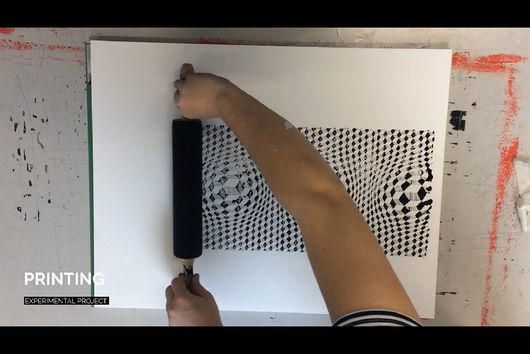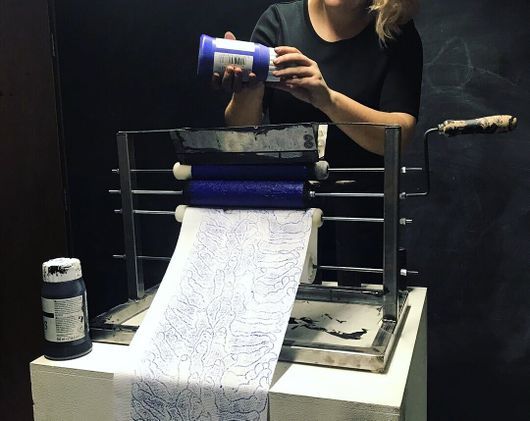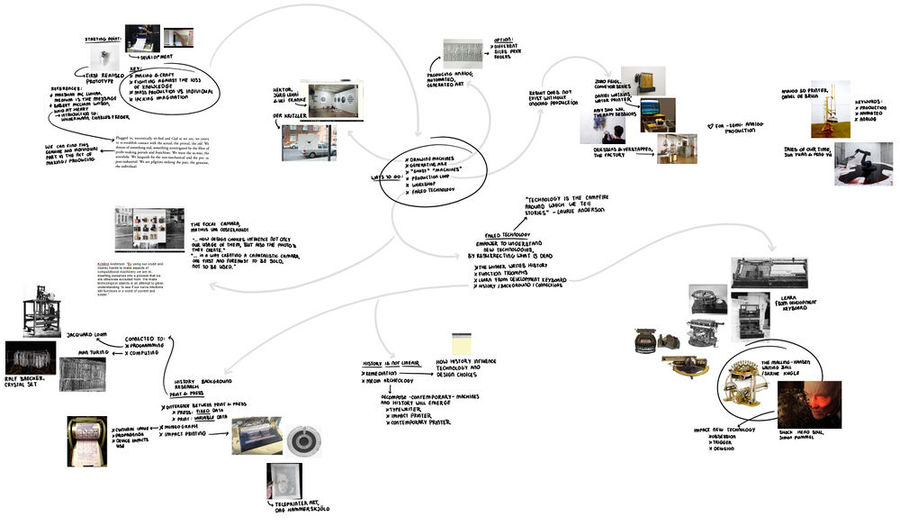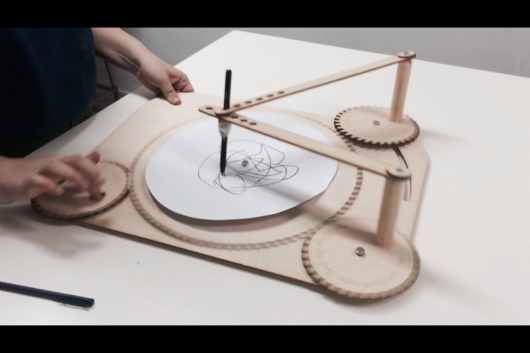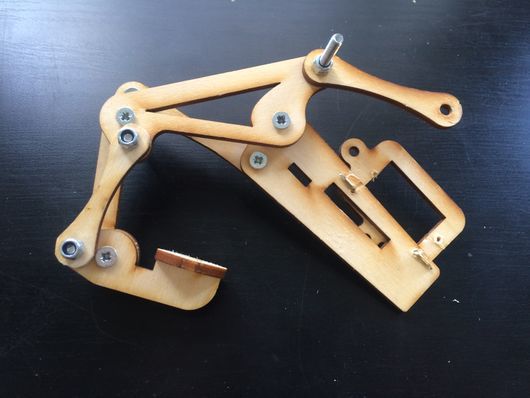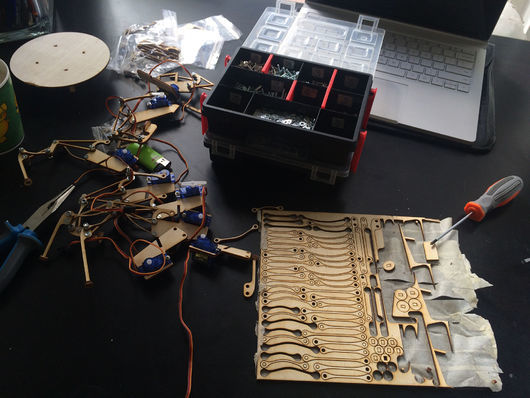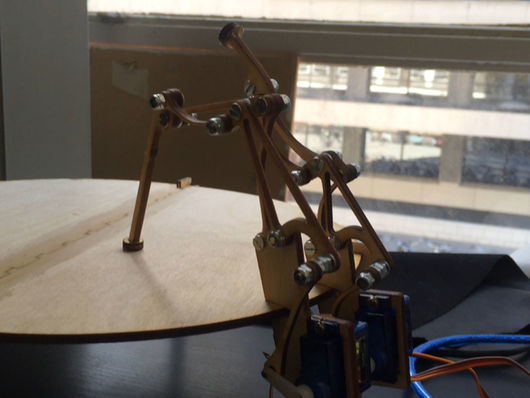Difference between revisions of "User:Jeanine Verloop/graduation"
| (2 intermediate revisions by the same user not shown) | |||
| Line 76: | Line 76: | ||
'''You talk about craft, what would have been your craft if you lived back then?''' | '''You talk about craft, what would have been your craft if you lived back then?''' | ||
<br> | <br> | ||
| − | ''I think I would live on some kind of junkyard, collecting all the strange | + | ''I think I would live on some kind of junkyard, collecting all the strange curiosities of that age.'' |
<br><br> | <br><br> | ||
'''How does the printing surface relate to the printing mechanism? What will it print, will it relate to the topic of failed technologies and historic value? ''' | '''How does the printing surface relate to the printing mechanism? What will it print, will it relate to the topic of failed technologies and historic value? ''' | ||
| Line 86: | Line 86: | ||
'''How much of my background story will I share during the exposition?''' Do I want to -literally- tell people what the significance is?''' | '''How much of my background story will I share during the exposition?''' Do I want to -literally- tell people what the significance is?''' | ||
</span> | </span> | ||
| − | |||
==Interesting work== | ==Interesting work== | ||
| Line 210: | Line 209: | ||
'''Servos need a lot of current because they are required to change position from standstill while under load. So if a lot of torque is need to move the output shaft, more torque = more current. If the servo has to hold a fixed position and is still under a load torque, the servo will continue to draw significant current to hold that position. With 3 servos attached the Arduino already did not have enough power. ''' | '''Servos need a lot of current because they are required to change position from standstill while under load. So if a lot of torque is need to move the output shaft, more torque = more current. If the servo has to hold a fixed position and is still under a load torque, the servo will continue to draw significant current to hold that position. With 3 servos attached the Arduino already did not have enough power. ''' | ||
<br><br> | <br><br> | ||
| − | '''I | + | '''I fixed this problem with the Pololu mini maestro micro controllers <ref name="Pololu mini maestro">Pololu mini maestro [https://www.pololu.com/product/1352 link]</ref>''' |
[[File:jeanine-pololu1.png|530px]] | [[File:jeanine-pololu1.png|530px]] | ||
| Line 218: | Line 217: | ||
==prints== | ==prints== | ||
| + | |||
| + | =external partner= | ||
| + | |||
| + | =stand alone presentation= | ||
</center> | </center> | ||
Latest revision as of 16:11, 21 May 2018
>>> graduation <<<
>>> GRADUATION <<<
RESEARCH PAPER
Contents
Forward, introduction
Jeanine Verloop
Major // illustration
USER PAGE JEANINE
Starting point

First experiment with analog printing. I put some sort of analog printing device inside a box, the printer would print other boxes.
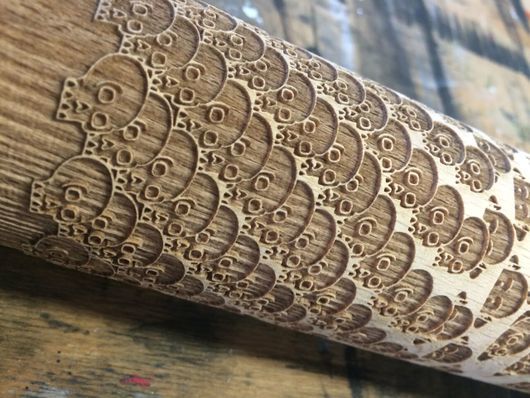
Second time around I experimented with making printing patterns and giving live demonstrations.
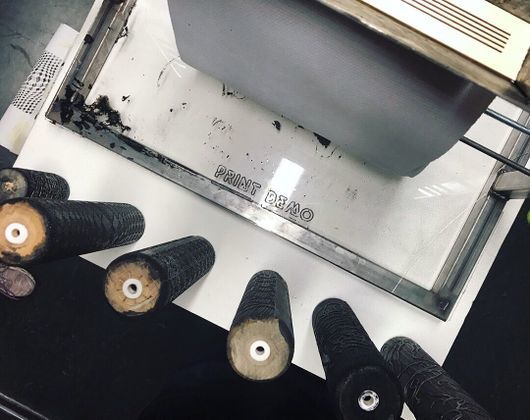
For me this project revolved around making, craft and fighting against the loss of knowledge. In the age of mass production I see less characteristics in our daily tools and objects, I wonder how this affects our imagination.
As Robert McLiam Wilson writes, in the introduction Wild at Heart for WilderMann, 'Plugged in, neurotically wi-fied and G3d as we are, we yearn to re-establish contact with the actual, the primal, the old. We dream of something real, something unmitigated by the filter of profit-making portals and franchises. We want the as-was, the erstwhile. We languish for the non-mechanical and the pre- or post-industrial. We are pilgrims seeking the past, the genuine, the individual.'
I believe we will find this genuine and individual part in the act of making / producing.
Possibilities
DRAWING MACHINES.
GENERATIVE ART. Analog generating of patterns. If I choose to do this, the focus will be on the result (?).
GHOST MACHINES. Building new and alien mechanical systems from old machines. Revolves around the machine.
PRODUCTION LOOP. Building a machine that would have to be in a constant production loop to show result. (!) Intentionally I would be in the catagory: criticism on mass production. Is this something that I would want?
WORKSHOP. To use other people to make a collection / mix of old and new printing techniques.
FAILED TECHNOLOGY. Empower to understand new technologies by resurrecting what is "dead".
Mindmap
Questions
Whats the value of doing this nowadays? What is so special?
Whats is your goal? Wat do you want to achieve?
What is the thread you are interested in?
Without being specific or exemplary, what is the project about?
What is the focus of this project?
When the machine produces, who owns the production?
You talk about craft, what would have been your craft if you lived back then?
I think I would live on some kind of junkyard, collecting all the strange curiosities of that age.
How does the printing surface relate to the printing mechanism? What will it print, will it relate to the topic of failed technologies and historic value?
How does technology influence the way the imagined result?
(!) What is the name of the project? (!)
How much of my background story will I share during the exposition? Do I want to -literally- tell people what the significance is?
Interesting work
Laurie Anderson 'Technology is the campfire around which we tell stories' [1]
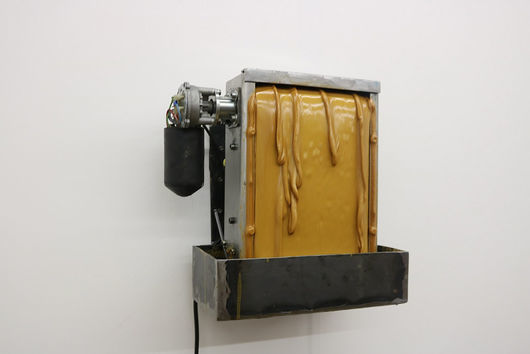 Zoro Feigl, Conveyor series [2] Interesting because without production there is no result, which is a nice metaphor.
Zoro Feigl, Conveyor series [2] Interesting because without production there is no result, which is a nice metaphor.
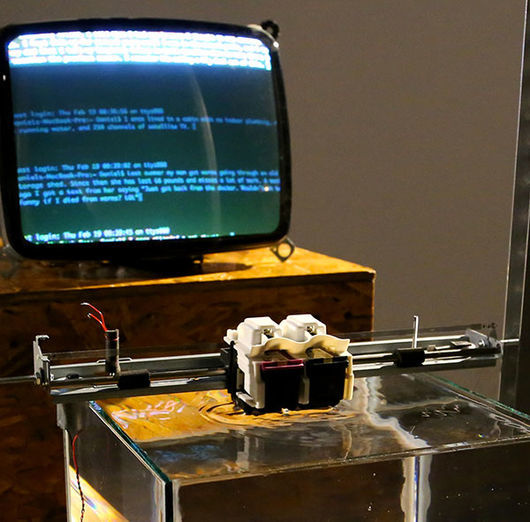 Daniel Watkins, Water Printer In the collective imagination, the machine, more than anything else, is a synonym for utility and efficiency. The Californian artist Daniel Watkins has built a machine in order to overturn these convictions, leaving space for reflection: a challenge to the concept of the future based on the validity of these processes.[3]
Daniel Watkins, Water Printer In the collective imagination, the machine, more than anything else, is a synonym for utility and efficiency. The Californian artist Daniel Watkins has built a machine in order to overturn these convictions, leaving space for reflection: a challenge to the concept of the future based on the validity of these processes.[3]
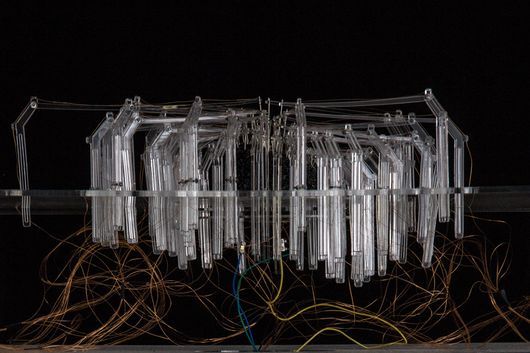 Ralf Baecker, Crystal Set Irrational computing. [4]
Ralf Baecker, Crystal Set Irrational computing. [4]
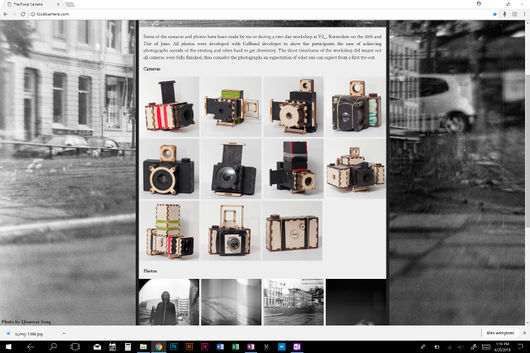 Mathijs van Oosterhoudt, The Focal Camara "The Focal Camera aims to take a critical look at how cameras are constructed and how design choices influence not only our usage of them, but also the photos they create.
Mathijs van Oosterhoudt, The Focal Camara "The Focal Camera aims to take a critical look at how cameras are constructed and how design choices influence not only our usage of them, but also the photos they create.
While many people own a camera or have the option to buy one, the choices made by commercial camera companies might not always be ones we would want or desire. Such companies first and foremost exist to create profit; in a way creating a capitalistic camera, one first and foremost to be sold, not used." [5]
Failed technology
Empower to understand new technologies, by resurrecting what is dead.
Laurie Anderson 'Technology is the campfire around which we tell stories' [1]
Kristina Anderson: "By using our crude and clumsy hands to make aspects of computational machinery we are re-inserting ourselves into a process that we are otherwise excluded from. We make technological objects in an attempt to glean understanding, to see if our naïve intuitions still functions in a world of current and solder." [6]
Mathijs van Oosterhoudt, The Focal Camara " (...) to take a critical look at how cameras are constructed and how design choices influence not only our usage of them, but also the photos they create.[5]
Who are the winners and who the losers?
Typewriter development
The Malling-Hanson Writing Ball
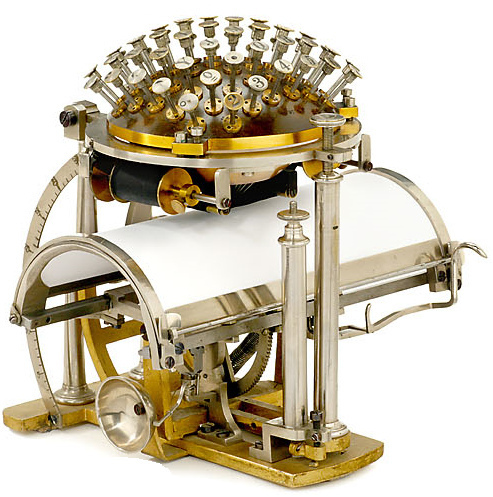
The Malling-Hansen Writing Ball
 Simon Pummel, Shock Head Soul How new technologies can contribute to obsession, triggers, delusion and fantasies.
Simon Pummel, Shock Head Soul How new technologies can contribute to obsession, triggers, delusion and fantasies.
Distrust is not something new, Peter Paul Verbeek describes how in the past people get afraid everytime technology takes a jump. "Die angst, gaat Verbeek verder, is kenmerkend voor perioden met veel en snelle technologische veranderingen. „Bij de industrialisering dacht men ook dat machines de mens zouden gaan vervangen.” ?"[7].
Historical Background
Print & Press
Computing
Programming
Media Archeology
Typewriter Olympia Traveller
Olympia portable typewriter traveller user guide [8]
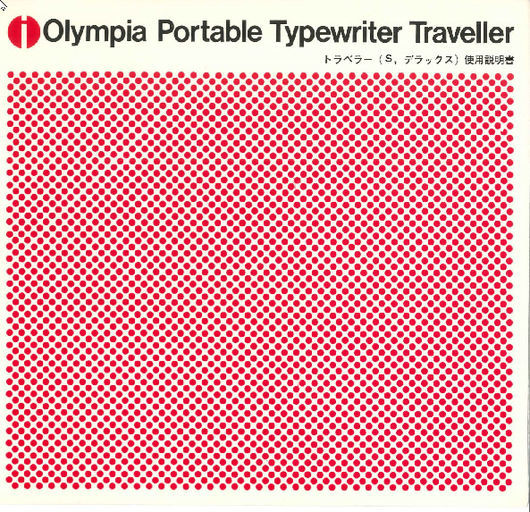
Olympia portable typewriter traveller user guide [9] ENGLISH (!)

Panasonic KX-P1081
Panasonic KX-P1081 user manual [10]
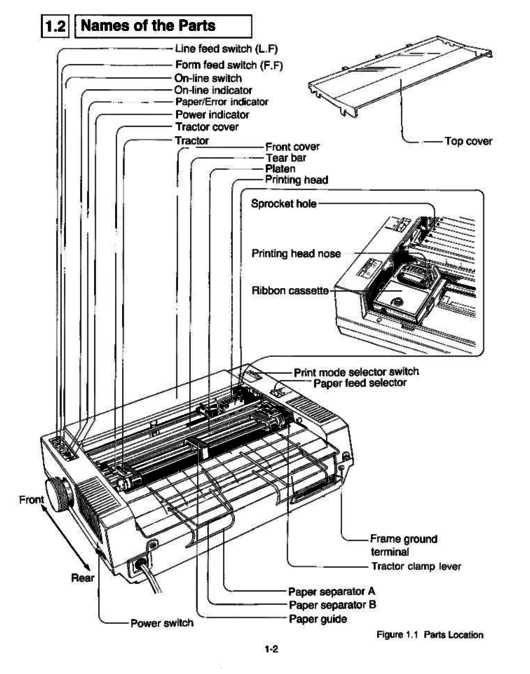
Brother M-1324
Brother M-1324 Dot Matrix Printer Owner's Manual [11]
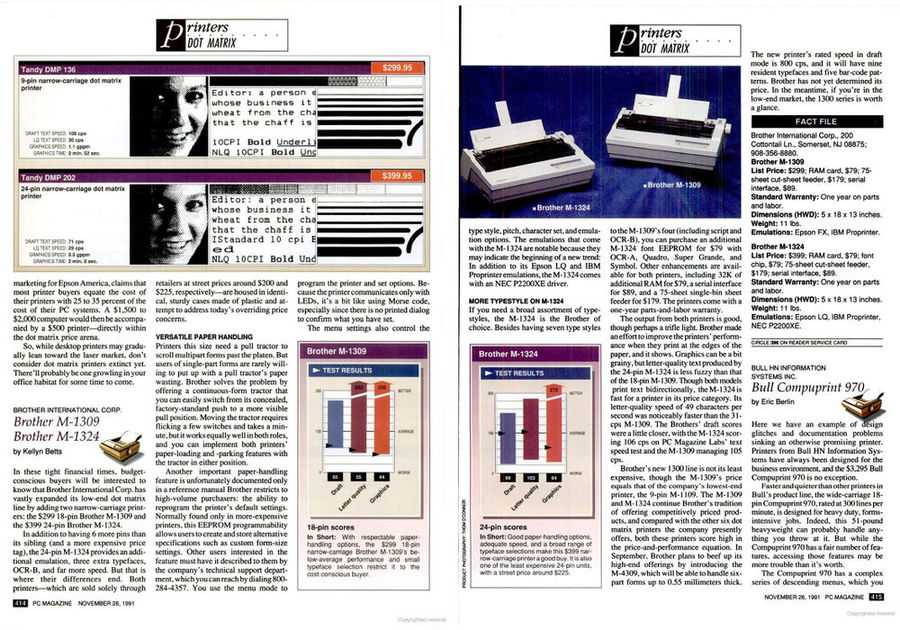
Brother DCP 4020C all in one
Brother DCP 4020C all in one user manual [12]
Epson Stylus Pro 7880
Epson Stylus Pro 7780 specs [13]
Epson Stylus Pro 7780 user manual [14]
Experiments
Harmonograph
Pixelprinter
Robotics
I started working on a mechanical hand, to better my understanding of gears. I used this example [15] from instructables to make my first hand. I quickly found the movement of the fingers interesting.
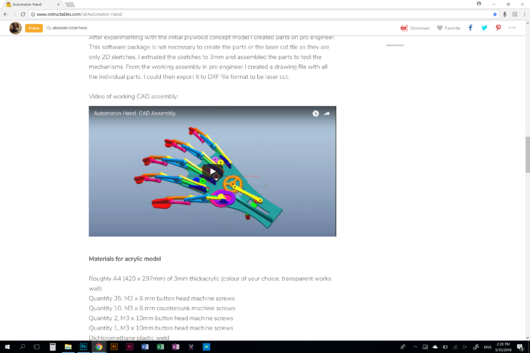
I used the robotic hand I made from instructables as a basis for further development. I set the goal, in the beginning of graduation, to work more with arduino. Not extremely complex stuff, but use some basic elements. I achieved a level of automation by using the little servo sg90 (specs)[16] motor.
[watch the process video here on vimeo]
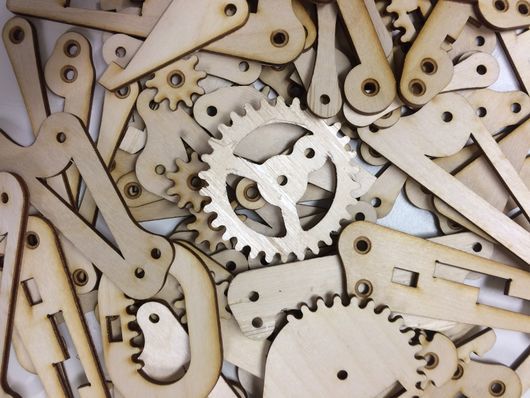
Servo's
Servos need a lot of current because they are required to change position from standstill while under load. So if a lot of torque is need to move the output shaft, more torque = more current. If the servo has to hold a fixed position and is still under a load torque, the servo will continue to draw significant current to hold that position. With 3 servos attached the Arduino already did not have enough power.
I fixed this problem with the Pololu mini maestro micro controllers [17]
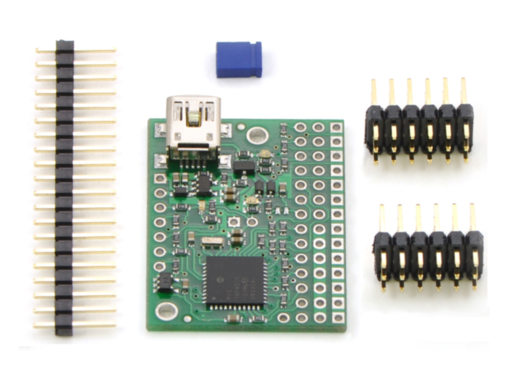
Proof of life
Program / software
prints
external partner
stand alone presentation
Bibliography
- ↑ 1.0 1.1 Technology is the campfire around which we tell our stories, Laurie Anderson link Cite error: Invalid
<ref>tag; name "Technology is the campfire around which we tell our stories" defined multiple times with different content - ↑ Conveyor series, Zoro Feigl link
- ↑ Water printer, Daniel Watkins link
- ↑ Crystal Set, Ralf Baecker link
- ↑ 5.0 5.1 The Focal Camara, Mathijs Oosterhoudt link
- ↑ Developing your own hardware, Kristina Andersen link
- ↑ Peter-Paul Verbeek, Wij hebben geen klauwen en dus hebben we ’n iPhone, website
- ↑ Olympia portable typewriter traveller user guide link
- ↑ Olympia portable typewriter traveller user guide link
- ↑ Panasonic KX-P1081 user manual link
- ↑ Brother M-1324 Dot Matrix Printer Owner's Manual link
- ↑ Brother DCP4020C all in one user manual link
- ↑ Epson Stylus Pro 7780 specs link
- ↑ Epson Stylus Pro 7780 user manual link
- ↑ Example mechanical hand link
- ↑ servo sg90 motor specs link
- ↑ Pololu mini maestro link
